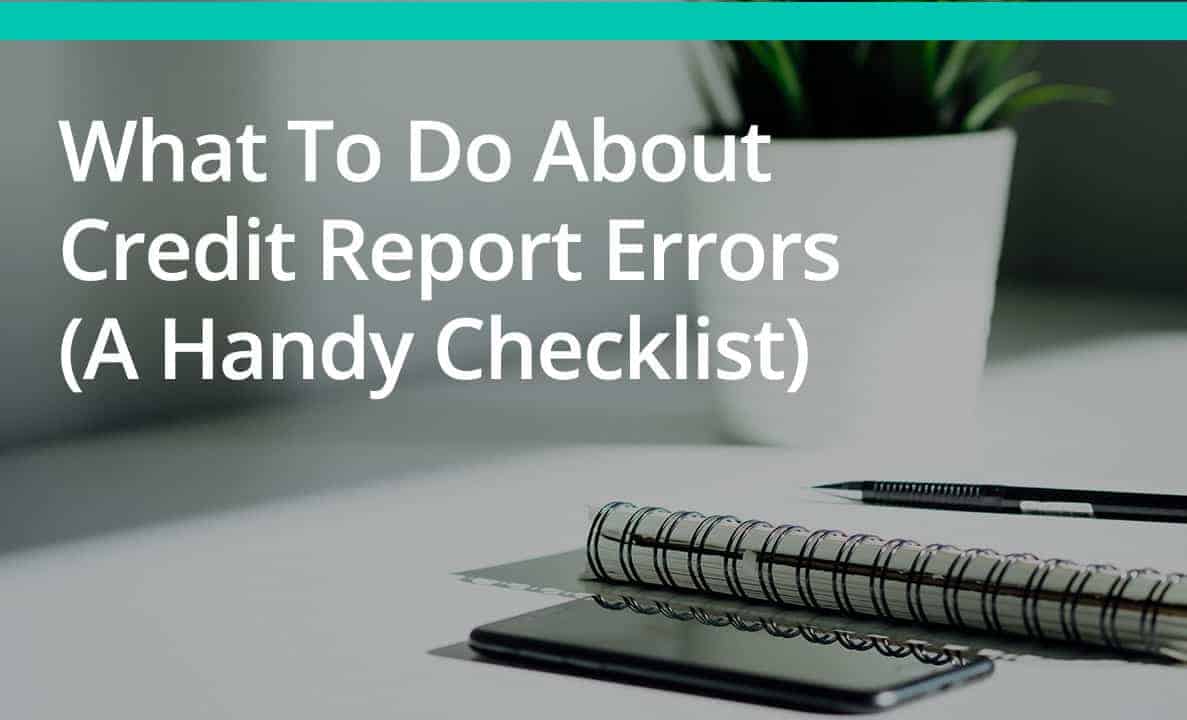
What To Do About Credit Report Errors: A Handy Checklist
It’s only three digits long, but your credit score can tell lenders all they need to know about your reliability as a borrower. It’s also an important factor in the car buying process because banks and dealerships will look at your credit before approving you for auto financing. If everyone else knows what your credit details are, you probably should too.
Ideally, you should check your credit report at least once a year to monitor the health of your credit and stay on top of any errors. This might come as a surprise, but credit reporting errors are more common than you think!
Here’s what this post will cover:
- How to get copies of your credit report — for free
- How to fix errors on your credit report
- Credit report error checklist
- Common credit report errors
- How credit report errors occur
- How to file a dispute on your credit report
How to get copies of your credit report — for free
In Canada, you can get a full credit report for free from both national credit bureaus, Equifax Canada and TransUnion Canada. All you need to do is send in a request form to both bureaus with some basic information and you’ll get a copy of your report in the mail within two to three weeks. If you need a credit report sooner, you can access it online for a fee of less than $20. It’s a good idea to get an annual report from each bureau because Equifax and TransUnion have slightly different monitoring algorithms.
How to fix errors on your credit report
When you first look at your credit report you’ll probably be overwhelmed by all of the information. The Government of Canada has a great online resource that explains what all the letters and numbers mean and includes sample reports from Equifax and TransUnion.
Hint: a letter shows the type of credit you’re using and a number shows when you make payments.
Once you’ve got a handle on what it all means you can comb through the four main categories to catch any errors. See our handy checklist below for what to look for.
Credit Report Error Checklist
Section 1: Personal Information
- Name is correct
- Social Insurance Number and birth date are correct
- Current and previous addresses and phone number are correct
- Marital status is correct
- Employment history is correct
Section 2: Public Records
- No incorrect lawsuits or judgements
- No incorrect bankruptcy filings
- No incorrect tax liens or criminal arrest records
- No incorrect collection agency statements
Section 3: Credit Accounts
- Each item under the credit/trade account is still open
- Current balances are correct
- Authorized user or joint user account is correct
- Zero balances for debts discharged and paid in full
- Co-signer is correct
- Accounts closed are correct
- Accounts are not listed more than once
- Old, negative information is not listed
- There is no indication of identity theft
Section 4: Inquiries
- Only hard inquiries from legitimate lenders are listed
Common credit report errors
Credit report errors are far from uncommon and while some incorrect information is harmless — like an old mailing address or incorrect date of birth — some errors can seriously affect your credit score and put a dent in your borrowing power.
More serious errors include incorrect debt payment information (such as on-time payments listed as late); negative information remaining on your credit report for longer than the maximum legally allowed seven year time frame; and credit card accounts or loans for someone with a similar name or someone who is fraudulently using your identity.
How credit report errors happen
According to the Fair Isaac Corporation or FICO — which invented the credit reporting model used by most major bureaus — credit errors often happen because the report is incomplete or contains information about someone else with a similar name.
An error on your report may be attributed to applying for credit with different variations of your name (ie. Richard Smith vs Rick Smith), a clerical error from a handwritten application, or a loan or credit card payment accidentally applied to the wrong account.
Equifax and TransUnion rely on data from banks, credit card companies, debt collection agencies and rental companies. With so many different information sources, there’s a lot of room for error.
How to file a dispute on your credit report
If you do find an issue in your credit report, you can send in a dispute to the bureau you got the report from. With Equifax, you can submit a Consumer Credit Report Update Form online, via fax or by mail. TransUnion accepts Credit Report Disputes over the phone or by mail. Both services are free.
You can also include a letter if you’re submitting a dispute in the mail. In your letter, try to be as clear and concise as possible and include specifics like account numbers, dates, and explanations of the items being disputed. However, before you send in your dispute, you should have all the supporting documents needed to prove your case. These could include payment receipts, financial statements, and valid pieces of identification.
Credit report errors can cause serious financial headaches. Once you spot an issue make sure you do everything you can to correct it.
Birchwood Credit Solutions’ advisors work with customers on an individual basis and understand everyone’s financial history is different. Fill out an application today and contact us to learn more about our flexible auto financing options.



